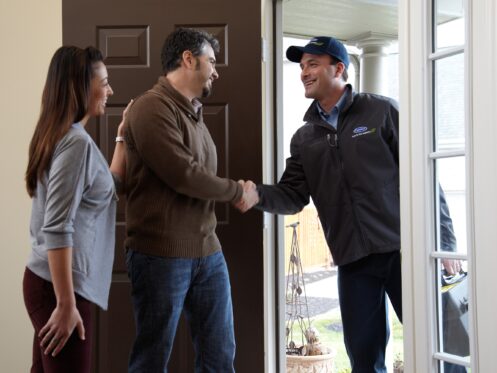When you decide to install an air conditioner, it is a major project for your home. You need to be prepared. Whether replacing an outdated unit or installing a new system, knowing what to expect on installation day can make everything go smoothly. Here is a look at what will happen on the big day.
Getting the Site Prepared
Your HVAC team will arrive on the day of your AC installation service. They will have all the equipment, including tools, refrigerant, electrical wiring, and your new air conditioning system. Before they begin, the team will assess the site to ensure everything is ready for installation.
They may lay down drop cloths or protective coverings to keep your home clean. You can expect to be without power in certain areas of the house. They need to do this to ensure a safe working environment. If your local regulations require permits, the technicians will confirm everything is in place before proceeding.
You may want to prepare your home and family for the installation. If you have children or pets, keep them in a space away from the technicians. This allows them to work without any interruptions. You might also want to clear out spaces to give the techs easy access. If they have to move furniture, that can increase the time spent on the job.
Removing Your Old AC System (If Needed)
If replacing an old AC, the next step is removing the existing unit. This part of the process can be difficult, especially when dealing with refrigerant and electrical components. Since refrigerant is a regulated substance, it has to be removed using specialized equipment to prevent it from being released into the air. This is done to meet environmental regulations.
Once the refrigerant is removed, the technician will disconnect the system’s key components, including refrigerant lines, wiring, and ductwork. The outdoor condenser unit must then be removed by detaching all connections. While inside your home, the techs will remove the evaporator coil and air handler. If your system has a furnace, that will also be removed.
With the old equipment out of the way, the team will inspect your existing ductwork, electrical connections, and drainage lines. If any repairs or upgrades are needed before installing your new AC, they will address those problems before moving to the next steps.
Installing Your New AC System
Your new AC is finally installed now that your old system is gone. During this step, the indoor and outdoor units must be set up. The technicians will make all the connections and get everything into place.
For central AC systems, the indoor unit consists of an evaporator coil and an air handler or furnace. If they install a ductless mini-split, the indoor component will be a wall-mounted air handler.
The technician will position the evaporator coil inside the air handler or furnace and connect a drain line to remove condensation. Proper drainage is important to prevent leaks or mold growth.
If your system relies on ductwork, they will look for leaks or damage. If there are problem areas, they will seal up those spaces. Small openings are made for refrigerant and electrical lines to run outside. Once the indoor unit is secured, they can move to the outdoor condenser.
Installing the Outdoor Condenser Unit
The outdoor condenser cools your home by releasing heat outside. Your installation team will place the unit in a well-ventilated spot. Most of the time, this is situated on a concrete pad or mounted on brackets. Placement does matter. With good airflow, your AC works more efficiently.
Once the condenser is in place, the technician will connect the refrigerant lines. These transfer heat between the indoor and outdoor units. These lines will be sealed and insulated to prevent leaks and keep your system running at peak performance.
Next, they will install the electrical wiring connecting the condenser to your home’s power supply. The final step is making sure the unit is level and securely mounted. If a condenser is unlevel, it can strain the compressor, which can lead to future system issues.
Connecting and Charging the Refrigerant System
Refrigerant allows your air conditioner to cool your home. Your technician will vacuum the refrigerant lines to remove moisture or air contamination. After that, they will check the lines for leaks. Even a small leak can reduce efficiency and cooling power.
Once everything checks out, the system must be charged with the correct amount of refrigerant. When the system is charged correctly, your air conditioning will operate without straining the compressor.
Wiring and Thermostat Installation
This is the time to complete the final electrical connections and install the thermostat. If you upgrade to a smart thermostat, your technician will connect it to your Wi-Fi network and walk you through how to use it. A properly installed thermostat maintains comfortable indoor temperatures while maximizing energy savings.
Testing the System and Final Checks
Once everything is installed, your cooling services team will run a series of tests to ensure your new system is working perfectly. They will power it on, let it run for a bit, and monitor its performance. They will also measure airflow to ensure cool air is evenly distributed. They will also check the refrigerant levels to confirm the system is properly charged.
After completing the technical checks, they will show you how to adjust your thermostat, change air filters, and schedule routine maintenance. They will also go over warranty details and any service plans that can help keep your system in top shape.
What to Expect After Installation
Once your new AC is up and running, it might take a few days for it to fully adjust to your home’s cooling needs. During this time, you may notice slight temperature fluctuations as the system optimizes its performance.
Regular maintenance is important to keep the system in proper shape. First, the filter must be changed regularly. You can expect to switch it out every one to three months. You also need to schedule annual tune-ups. During these, your HVAC provider can catch small issues before they turn into big problems. Also, you will want to keep the outdoor unit clear of debris like leaves and grass clippings to ensure proper airflow.
A professionally installed AC system can lower energy bills than your previous unit. However, if you notice unusually high energy costs or uneven cooling, you should follow up with your HVAC provider to ensure everything works.
When installing an air conditioner for your home, you need to turn to a skilled and professional team. At Bryant Heating, Cooling, Plumbing & Electric, we are here to ensure you have a system that keeps you cool all season long in Louisville, KY. We also work to optimize your home comfort while cutting your heating and cooling costs. You can count on us for all your heating and cooling services.
Once we install the AC, we have preventative maintenance plans to keep it in shape. Schedule an appointment by contacting Bryant Heating, Cooling, Plumbing & Electric today.



